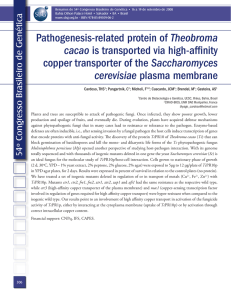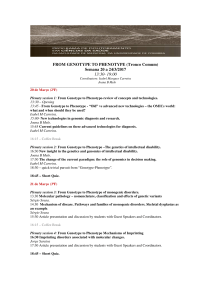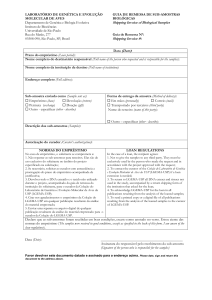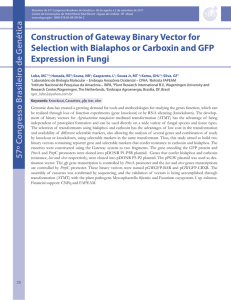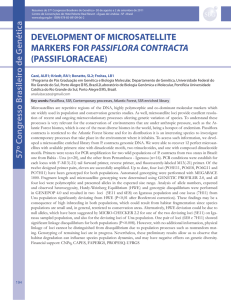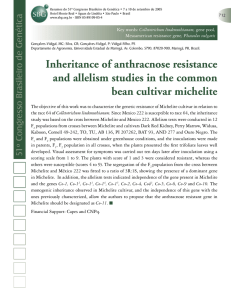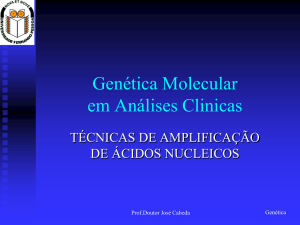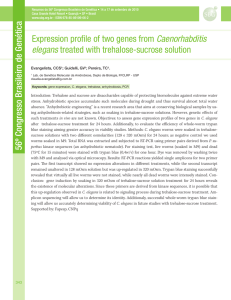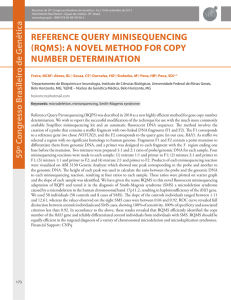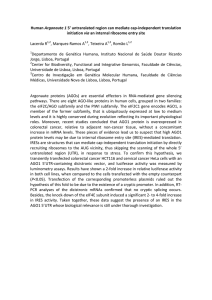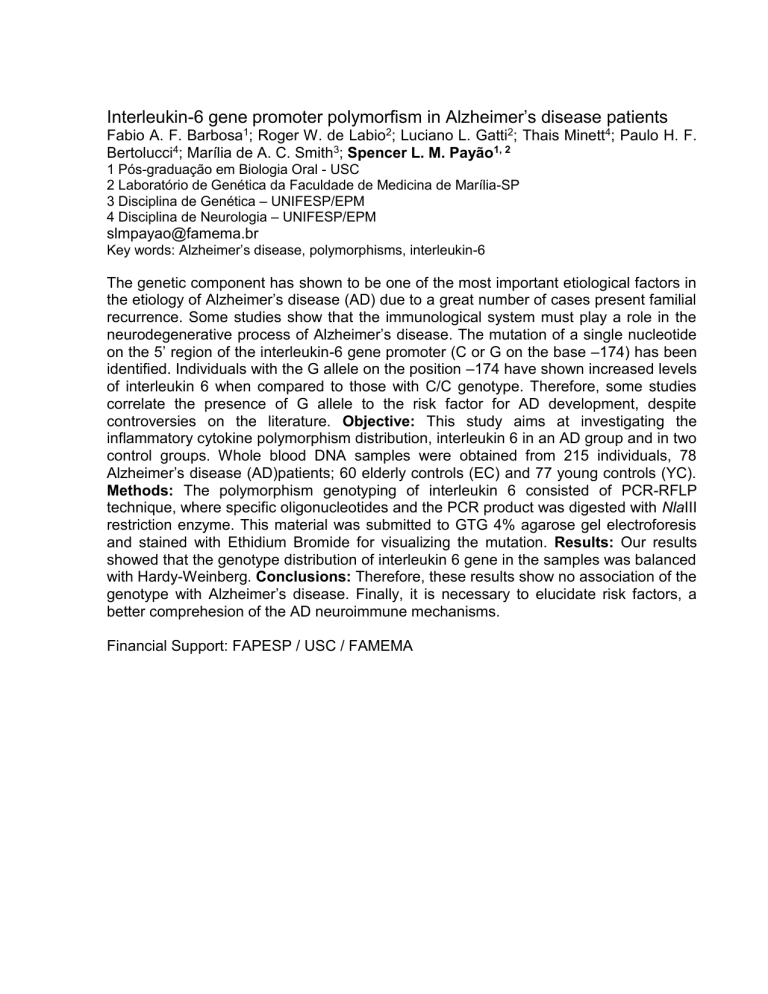
Interleukin-6 gene promoter polymorfism in Alzheimer’s disease patients
Fabio A. F. Barbosa1; Roger W. de Labio2; Luciano L. Gatti2; Thais Minett4; Paulo H. F.
Bertolucci4; Marília de A. C. Smith3; Spencer L. M. Payão1, 2
1 Pós-graduação em Biologia Oral - USC
2 Laboratório de Genética da Faculdade de Medicina de Marília-SP
3 Disciplina de Genética – UNIFESP/EPM
4 Disciplina de Neurologia – UNIFESP/EPM
[email protected]
Key words: Alzheimer’s disease, polymorphisms, interleukin-6
The genetic component has shown to be one of the most important etiological factors in
the etiology of Alzheimer’s disease (AD) due to a great number of cases present familial
recurrence. Some studies show that the immunological system must play a role in the
neurodegenerative process of Alzheimer’s disease. The mutation of a single nucleotide
on the 5’ region of the interleukin-6 gene promoter (C or G on the base –174) has been
identified. Individuals with the G allele on the position –174 have shown increased levels
of interleukin 6 when compared to those with C/C genotype. Therefore, some studies
correlate the presence of G allele to the risk factor for AD development, despite
controversies on the literature. Objective: This study aims at investigating the
inflammatory cytokine polymorphism distribution, interleukin 6 in an AD group and in two
control groups. Whole blood DNA samples were obtained from 215 individuals, 78
Alzheimer’s disease (AD)patients; 60 elderly controls (EC) and 77 young controls (YC).
Methods: The polymorphism genotyping of interleukin 6 consisted of PCR-RFLP
technique, where specific oligonucleotides and the PCR product was digested with NlaIII
restriction enzyme. This material was submitted to GTG 4% agarose gel electroforesis
and stained with Ethidium Bromide for visualizing the mutation. Results: Our results
showed that the genotype distribution of interleukin 6 gene in the samples was balanced
with Hardy-Weinberg. Conclusions: Therefore, these results show no association of the
genotype with Alzheimer’s disease. Finally, it is necessary to elucidate risk factors, a
better comprehesion of the AD neuroimmune mechanisms.
Financial Support: FAPESP / USC / FAMEMA

